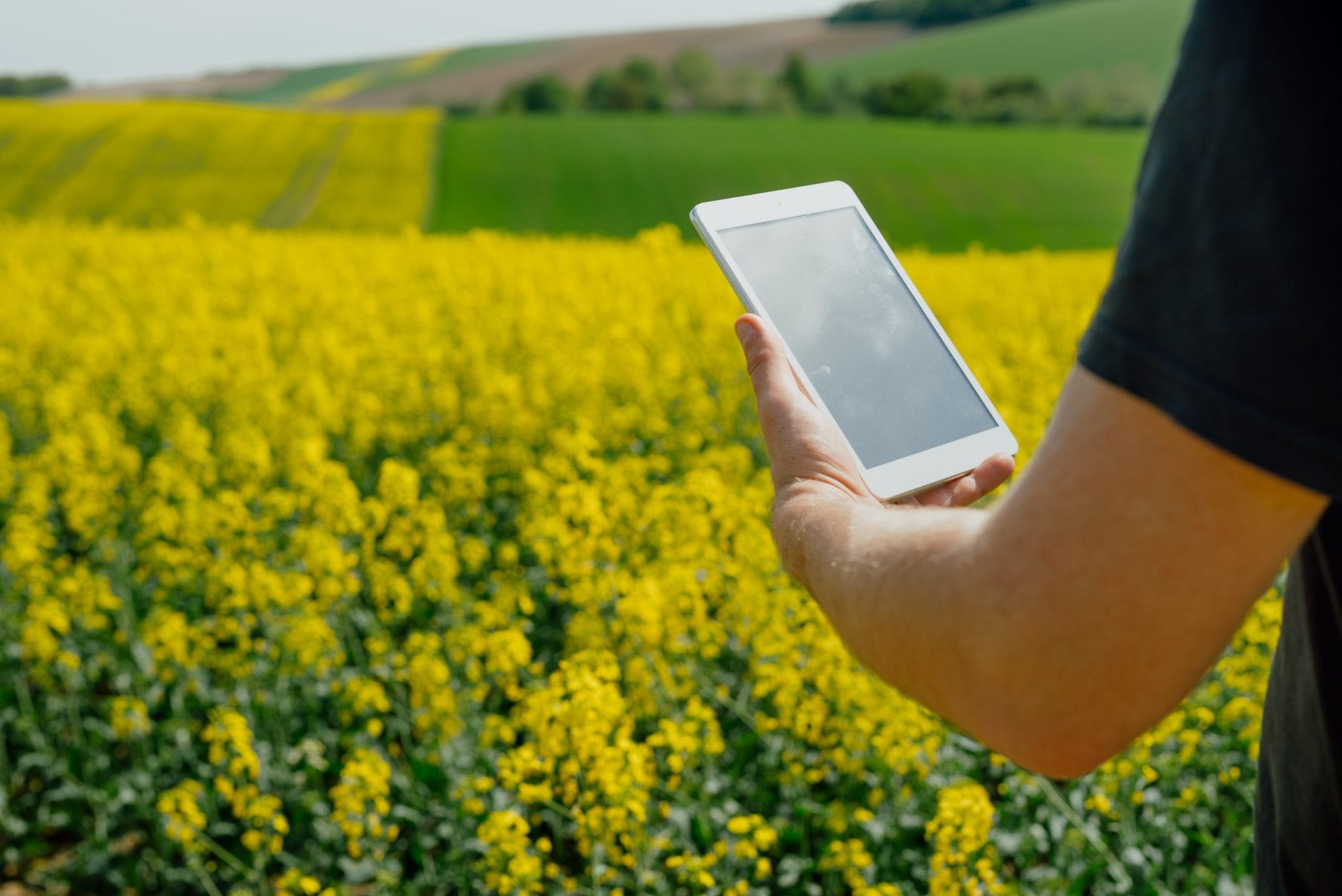
Test

Farming is the oldest industry on earth and arguably the most important. It feeds the world, employs millions and sustains life. Yet it’s under attack because agriculture requires energy and nutrients, it emits nine per cent of UK greenhouse gas emissions and consumes 70% of our water. To produce one slice of bread for your toast in the morning takes 40 litres of water. Put another way, the water used to produce the bread for a city the size of Manchester in one year is enough to keep the whole of the UK in drinking water for four years.
Farmers rely on diverse data and years of accumulated experience to produce our food. Farming requires constant attention to detail and a lot of hard work – and operating margins are very slim. The UK Agriculture and Horticulture Advisory Board (AHDB) report, Driving productivity together describes how improving farming productivity has a significant part to play in UK competitiveness and is critical to operating in a global market. But UK productivity in farming has not kept pace with our main overseas competitors, and the agriculture sector is three times less efficient than other areas of the economy. Given the resources required for agriculture and the national need to increase productivity, our greatest challenge now is how we help agriculture to consume less and produce more.
To understand how we can use data and diagnostics in traditional broadacre farming to enable farmers to grow more from less, we have to compare how we make decisions on the farm today with how we will exploit data in the future to make decisions.
Crop operations have always been done at field level. However, no field is ever homogenous: farmers know moisture varies across fields, edge effects from hedgerows can change the environment and soil nutrients can be affected by their farm operations. Yet up to now treatments are generally executed on the whole crop in a field, regardless of the actual variability across the area.
If we truly want to optimise resource consumption and maximise crop productivity, growers need to understand the individual needs of each plant and the in-field variability. For best performance, the treatment of each plant will be tailored to its unique requirements for optimal resource use. Rather than treating the whole population of plants in a field the same way, we will monitor and manage each plant individually, so that it can reach its yield potential: a kind of personal healthcare for plants.
Imagine you are a farmer and can access an app that uses precise data, and lets you see how each part of the field and plant is performing; where the moisture is, the microclimate, and the ripeness of the crop across the field. With this knowledge, a grower can plan crop protection activities, schedule machinery maintenance, and protect biodiversity in increasingly efficient ways. Rich predictive models to understand the disease and pest risk can be created from this data, helping the farmer have confidence in their decisions to spray (or not) or to apply fertiliser.
The farmer will be able to focus in on any area of a field or rows of plants and monitor their ripeness, nutrient content and using the data will be able to instruct treatments using their experience and knowledge. This precision agriculture vision of the future relies on huge volumes of diverse data about the farm, the field, the crop and the plant. It is current and future data and diagnostics capabilities that predicate its success.
This new future of farming has started to emerge where the plants themselves request resources and treatment, and there is a farming system that automatically responds. These future systems of agriculture are being targeted by new technology startups, such as CHAP member Small Robot Company. This ‘per plant precision’ enables Integrated Farm Management(IFM), and is essentially kinder to the soil, kinder to the environment, more precise and more productive.
The impact that data and diagnostics will have on the future of farming is immense. But there are some blockers that, if allowed to remain, could slow our path to clean growth in agriculture. In particular, the components in the data and diagnostics pipeline; the measurement systems, the data capture networks, and the analytics algorithms all need to be FAIR. FAIR stands for the Findable, Accessible, Interoperable and Reusable principles (as published by Force 11). Just how critical it is that data and components are FAIR was described by the GODAN, 2016 summit report A Global Data Ecosystem for Agriculture and Food.
The UN: Food and Agriculture Organisation (FAO) describes how 80% of the effort in these new data systems, goes into searching for data, curating it so that it works with other systems, and enhancing it for reusability. Many organisations are adopting FAIR principles to make their products more interoperable and helping them operate in a multi-vendor space and remove that 80% resource overhead.
All the UK Agri-Tech Centres are champions for FAIR data. And the UK, through the Open Data Institute, has taken a leadership position in advocacy for FAIR data for agriculture and food. The partnership between CHAP members Hummingbird and Agrovista, combining the data capture and machine learning capabilities of Hummingbird with the powerful agronomic decision support tools of Agrovista is a prominent example of achievements using FAIR principles in data and diagnostics.
The data that will enable this new 21st-century farming will pour in from irrigation systems, weather stations, imaging systems, soil activity, pest and disease sensors, all located in and around the crop, as well as on-farm machinery, robots and satellites. A great deal of this is possible because of the Internet of Things (IoT). The technologies and system of connected devices and digital machines, communicating with each other. IoT provides the farm with the ability to sense, transfer data across wide areas, and response to stimuli. Most people would be familiar with IoT as smart devices at home, managing heating, lighting, and door access, all controlled through a smartphone or smart-speaker.
The technical challenge is to turn all that data into a real-time indicator of how a crop is doing. Data captured on the farm, in the crop, and from national weather systems, is automatically sent to cloud computing systems. From there it is not only handed over to data scientists for analytics and insight, but also accessible by machine-learning algorithms to find patterns in the data that a human might miss. All of these analyses and insights are then pushed back to the farm for the farmer or agronomist to make better and informed decisions, or for automatic instructions for automated crop management systems.
To bring data and diagnostics to traditional broadacre farming so that growers can grow and produce more from less, we have to generate FAIR data. Confidence in the security and management of farm data is also vital to gaining trust from data owners. One emerging approach that can drive this is Data Trusts. Such data trusts take the concept of a legal trust and apply it to data, managing the data and making decisions about its use, within the guidelines of the trust.
An example where this future vision of data-driven decision support is available for farmers is from the CHAP CropMonitor Pro service. CropMonitor Pro provides the farmer with current intelligence about the pest and disease threat at their location. The threat is derived using a range of sophisticated prediction models that are supplied with data from the data and diagnostics pipeline, starting at monitoring sites located across the country. Samples, collected from these monitoring sites are also used for analysis and research by other services within CHAP and guarantee CropMonitor Pro’s active calibration.
Those data pour in from field-based spore traps and weather stations. Once ingested they are consumed by the 30 CropMonitor Pro prediction algorithms, that give the farmer access to risk predictions, weather and environment data, pest and pathogen predictions to help the grower make decisions on crop and pest management.
CHAP is acting as a beacon with a digital call to action for the Crop Health and Protection sector to focus on three primary areas for digital enablement; Digital Agronomy, Redesigning the Crop Protection Toolbox, and Controlled Environment Agriculture.
By engaging with industry partners, together they have created clear statements of the digital challenge. These were rigorously tested in discovery workshops with industry, academic, NGO and public agencies. In the same sessions, candidate options to meet the challenge were defined. A lack of FAIR data has been a common theme in all discovery workshops. A follow-up workshop for each focus area has created a short-list of those options to be built into business cases, for public or private funding.
A great deal of what the world needs to achieve through precision farming is non-competitive and delivers public goods. The farmer can make use of precision farming to reduce costs, lower risk and significantly increase productivity. The public goods that come from it are a healthier countryside, a smaller carbon footprint and greater biodiversity. This call to action with industry is to help us all see that working together across the industry through collaboration and a shared vision of better interoperability of our data, will push the UK to the forefront in digital farming.
All the capabilities, delivered by CHAP working with InnovateUK, provide the means for the UK to lead in the digital transformation of crop protection and decision making in agriculture. Making use of this to improve UK productivity is contributing towards the shared goal of helping to feed the country and the world, and also making the UK a world leader, exporting both the technology and expertise worldwide.
CropMonitor Pro is a state of the art sophisticated decision support platform which has been developed by Fera with Crop Health and Protection funded by Innovate UK
CropMonitor Pro is a state of the art sophisticated decision support platform which has been developed by Fera with Crop Health and Protection funded by Innovate UK.
click below for more details
As part of the International Pest Horizon Scanning capability, CHAP has funded the distribution of 180 Android tablet devices to plant doctors in five countries: Ghana, Nepal, Peru, Vietnam and Malawi.
click below for more details
CHAP’s Vertical Farming Development Centre is housed at Stockbridge Technology Centre (STC), near Selby, and provides additional and complementary capabilities to STC’s existing LED4CROPS facilities.
click below for more details
CHAP plays a key role in developing new control strategies, which are going to be essential for the farmers and growers who are having to deal with the loss of actives in the market.
- Dr Tom Ashfield , Rothamsted Research
For more information on our capabilities or to discuss a collaboration and/or grant for a commercially funded project, complete the form below.

© 2019 CHAP - Crop Health and Protection Limited
Test